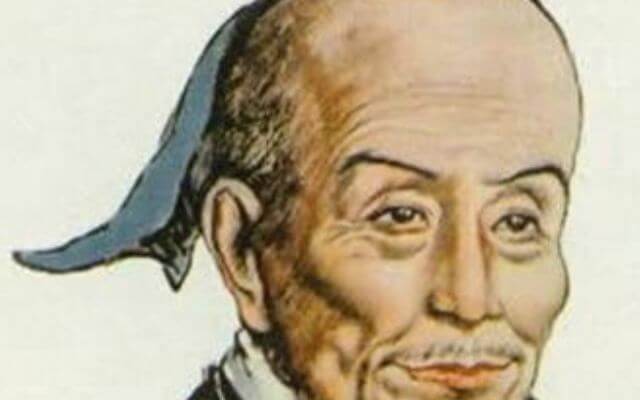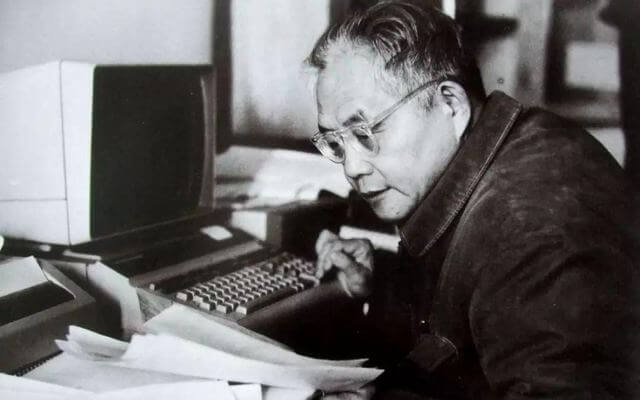Mathematics plays an irreplaceable role in human development and social life. As the masters of this discipline, mathematicians are synonymous with wisdom and hard work. The international reputation and contributions of Chinese mathematicians in the field of mathematics cannot be ignored. You Do you know who are the most powerful mathematicians in China? This article introduces the top ten mathematicians in ancient and modern China.
[lwptoc numeration=”none” numerationSuffix=”none” title=”Top 10 mathematicians in China” width=”full”]1. Zu Chongzhi 祖冲之

Zu Chongzhi (429~500 years), with the word Wenyuan, was born in Jiankang (now Nanjing), and his ancestral home was in Qiuxian County, Fanyang County (now Laishui County, Hebei). He was an outstanding mathematician and astronomer during the Southern and Northern Dynasties of China. A student of Zu Chong studied natural sciences, and his main contributions were in mathematics, astronomical calendar and mechanical manufacturing. On the basis of Liu Hui’s precise method of exploring the pi, he calculated the “pi” to the seventh decimal place for the first time, that is, between 3.1415926 and 3.1415927. The “zu rate” he proposed has made a significant contribution to the study of mathematics.
2. Liu Hui 刘徽
Liu Hui (approximately 225-approximately 295 years), Han nationality, born in Zouping City, Binzhou, Shandong, was a great mathematician during the Wei and Jin Dynasties, and one of the founders of Chinese classical mathematical theory. Liu Hui is a great mathematician in the history of Chinese mathematics. His masterpieces “Nine Chapter Arithmetic Notes” and “Island Mathematical Classics” are China’s most precious mathematical heritage. Liu Hui is agile in thinking and flexible in his methods. He advocates both reasoning and intuition. He is the first person in China to clearly advocate the use of logical reasoning to demonstrate mathematical propositions.
3. Zhu Shijie 朱世杰
Zhu Shijie (1249-1314), the character Hanqing, and the name Songting, Han nationality, Yanshan (now Beijing) Renshi, a mathematician and educator in the Yuan Dynasty, engaged in mathematics education all his life. Known as “the greatest mathematician in the medieval world”. Zhu Shijie developed the “quaternion technique” on the basis of the Tianyuan technique at that time, which is to list the quaternion high-order polynomial equations and the method of elimination. In addition, he also created the “stack product method”, which is the summation method of high-order arithmetic sequences, and the “calling technique”, which is the high-order interpolation method. Zhu Shijie’s main works are “Enlightenment of Mathematical Studies” and “Siyuan Yujian”.
4. Hua Luogeng 华罗庚

Hua Luogeng is a world-renowned mathematician, a mathematician of the people, a well-known science writer, the founder and pioneer of Chinese analytic number theory, canonical group, matrix geometry, automorphic function theory and multi-complex variable function theory, etc. One of the 88 mathematics greats in the world today, one of China’s most influential mathematicians in the world, an academician of the Chinese Academy of Sciences, a foreign academician of the National Academy of Sciences of the United States, a standing committee member of China’s 1st to 6th National People’s Congress, and a vice chairman of the 6th National Committee of the Chinese People’s Political Consultative Conference.
5. Su Buqing 苏步青
Su Buqing (September 23, 1902-March 17, 2003), born in Pingyang, Wenzhou, Zhejiang, was born in Quanzhou, Fujian Province, an academician of the Chinese Academy of Sciences, a well-known Chinese mathematician and educator, and the founder of the Chinese School of Differential Geometry. He is “the brilliant mathematics star in the eastern country”, “the first geometer in the east”, and “the king of mathematics.” Su Buqing is mainly engaged in the research of differential geometry and computational geometry, and has made outstanding achievements in the research of affine differential geometry and projective differential geometry. He has made outstanding achievements in general space differential geometry, high-dimensional space conjugate theory, and geometric appearance design. , Computer-aided geometric design and other aspects have made outstanding achievements.
6. Mei Wending 梅文鼎
Mei Wending (1633-1721), with the word Dingjiu, Wu’an, Han nationality, was born in Xuanzhou (now Xuanzhou District, Xuancheng City, Anhui Province). Astronomers and mathematicians in the early Qing dynasty were the “first masters of calendar calculations” and “ancestors of mountains” in the Qing dynasty. They were praised by the world’s scientific and technological circles as the “three world science giants” with the same fame as British Newton and Japan’s Seki Takaka. Mei Wending devoted his life to reviving traditional Chinese knowledge of astronomy and arithmetic, and promoting the integration of Chinese and Western astronomy. In his works, Mei Wending once again clarified the ancient calendar principles that have been lost.
7. Chen Xingshen 陈省身
Chern was born in Xiushui County, Jiaxing, Zhejiang Province on October 28, 1911. He is one of the greatest geometers in the 20th century. In order to commemorate the outstanding contribution of Chern, the International Mathematical Union (IMU) also specially established the “Chern Medal” as The highest-level lifetime achievement award in the international mathematics world. In his later years, Chern devoted himself to promoting the development of Chinese mathematics. He founded the Chern Institute of Mathematics at Nankai University, Tianjin. At 19:14 on December 3, 2004, Chern died at the General Hospital of Tianjin Medical University at the age of 93.
8. Qiu Chengtong 丘成桐
Shing-Tung Yau (Shing-Tung Yau), originally from Jiaoling County, Guangdong Province, was born in Shantou, Guangdong in 1949. He is an internationally renowned mathematician and the first Chinese winner of the Fields Medal. Shing-Tung Yau proved that the Calabi conjecture and the positive mass conjecture are geometric analysis. The founder of the discipline, the Calabi-Yau manifold named after him, is the basic concept of string theory in physics and has made important contributions to the development of differential geometry and mathematical physics. He was the first Chinese to receive this so-called “Nobel Prize in Mathematics” and the second Chinese to receive the Wolf Prize in Mathematics after Chen Sheng.
9. Chen Jingrun 陈景润
Chen Jingrun (May 22, 1933-March 19, 1996), male, Han nationality, person without party affiliation, from Fuzhou, Fujian, contemporary mathematician. In September 1953, he was assigned to teach in Beijing No. 4 Middle School. In February 1955, he was recommended by the then president of Xiamen University, Mr. Wang Yanan, and returned to his alma mater, Xiamen University, as a teaching assistant. In October 1957, due to the appreciation of Professor Hua Luogeng, Chen Jingrun was transferred to the Institute of Mathematics, Chinese Academy of Sciences. A detailed proof of (1+2) was published in 1973, which was recognized as a major contribution to the study of Goldbach’s conjecture.
10. Xiong Qinglai 熊庆来
Xiong Qinglai was born in Xizai Village, Maitreya City, Honghe Hani and Yi Autonomous Prefecture, Yunnan Province. He is a pioneer of modern Chinese mathematics and one of the main pioneers of Chinese function theory. In 1934, his thesis “On infinite-order integral functions and meromorphic functions” was published. He obtained the French National Ph.D. and became the first Chinese to obtain this degree. In this paper, the “infinite-order function” defined by Xiong Qinglai, which is called “Xiong’s infinite number” in the world, has been included in the world history of mathematics and established his position in the international mathematics circle.